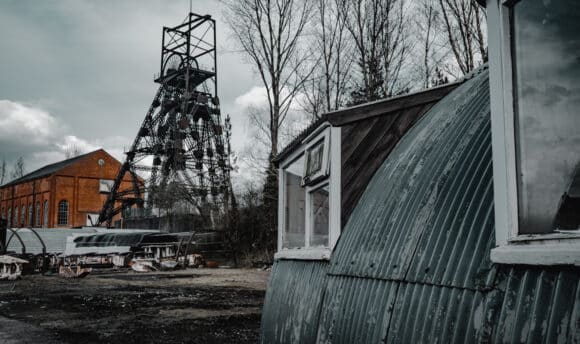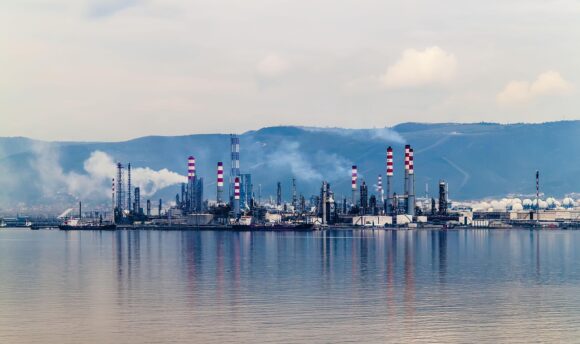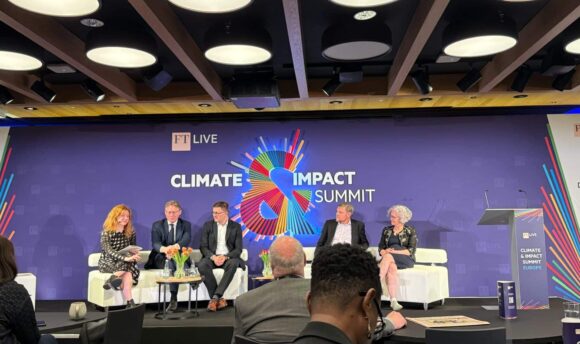This weekend, thousands of activists from all over Europe are occupying RWE’s Hambach site, a giant open-pit lignite mine in North Rhine-Wesphalia in Germany. This annual mobilization has become a symbol of the fight against fossil fuels and has even greater significance this year as Germany discusses a coal phase-out date.
While a growing number of finance institutions are distancing themselves from RWE and are denouncing its aggressive coal expansion plans, others are being called on by activists and NGOs to swiftly follow suit. Among them are Allianz and AXA, insurance companies that adopted policies excluding coal but failed to cut all their ties with RWE.
There are 10 key reasons to finally break free from RWE.
- Break free from coal: RWE is the world’s largest producer and operator of lignite, the dirtiest form of coal. Mining 91.3 million tonnes of lignite each year, RWE is the world’s largest lignite producer and the 17th largest coal producer. With 18 GW of installed coal capacity, it is also the leading European producer of coal-fired electricity and the 14th largest in the world.
- End coal expansion: RWE is still one of the 120 most aggressive companies in terms of developing new coal-fired power plants. While any new coal-fired power plant is strictly inconsistent with the objective of limiting global warming to well below 2°C and as close as possible of 1,5°C, RWE plans to build a 1100 MW power plant called BoAplus. This power plant would be supplied by the Hambach mine as well as bye Garzweiler – another large open-pit lignite mine in North Rhine-Westphalia.
- Protect the climate: RWE is Europe’s largest CO2 emitter, with 111 million tonnes of CO2 emitted in 2017 from its coal-fired power plants. This is the equivalent to the cumulative emissions of Sweden, Switzerland and Portugal.
- Protect public health: RWE’s coal plants are estimated to have caused 1855 premature deaths in 2015. RWE owns three of the five most polluting coal-fired power plants in Europe, including Niederaussem and Neurath. Supplied with coal by the Hambach and Garzweiler mines – these two plants alone cause nearly 800 premature deaths per year across Europe, as fine particles know no borders.
- Drive the energy transition: RWE recently acquired EON’s renewable energy portfolio, automatically reducing the share of coal in its electricity mix from 54% to 51%. However, this does not imply an absolute reduction of its coal activity, as evidenced by the fact RWE still intends to expand its lignite mines and to build a new coal plant. Moreover, this move does nothing to suggest RWE will phase out coal by 2030, as required to meet the Paris Agreement objective of keeping global warming well below 2°C and as close as possible of 1.5°C. On the contrary, RWE intends to keep its mines in operation until 2050 and as Matthias Hartung, former CEO of RWE’s electricity division clearly stated in December 2017, for RWE, “the time for lignite is not over”.
- Protect human rights: RWE’s coal activity has led to the destruction of more than 130 villages. Symbolic of the cultural loss for which RWE is responsible is the destruction of the Immerath Church: despite its status as a historic building, it was demolished in January 2018 in favour of the expansion of the Garzweiler mine. RWE has also forcibly displaced more than 44,000 people in the North Rhine-Westphalia region. Uprooted and relocated in brand new villages, without fair compensation, their lives are shattered. The Garzweiler mine now threatens 6 more villages, including Keyenberg, home to 1000 inhabitants.
- Biodiversity: RWE has already destroyed 90% of the 12,000-year-old Hambach forest, the last primary forest in Europe, in order to expand its Hambach lignite mine. The Hambach forest is home to species threatened and protected by European law, including the Marble Woodpecker, a species protected under the European Wild Birds Directive.
- Fight for democracy: Germany has set up a coal commission to set a date for the closure of its coal-fired power plants. This date must be established by the end of 2018. A policy consistent with the climate objectives of Germany and the international community would imply the closure of the two power plants supplied by the Hambach mine, whose expansion would therefore be unnecessary. By continuing to clear the Hambach forest before the commission issues its conclusion, RWE hoped to create a fait accompli. Only a court ruling against the immediate clearing of the forest stopped them. Earlier this year, RWE’s Executive Director Martin Schmitz stated “if there is a desire to get out of the coal quickly, we must be compensated”. In order to force the German government to set the latest possible coal exit date, RWE is clearly willing to make German citizens pay for the cost of phasing out coal.
- Make RWE foot the bill: The RWE share dropped 8% after a German court halted the Hambach forest clearance. RWE announced it expects annual charges in the three-digit million range as of 2019 as a result of the stop in deforestation. Moreover, while RWE would have to invest up to 200-600 million euros in order to comply with the emissions standards that come into force in 2021, a new IEEFA report found out this investment would make no sense in a context of compressed profit margins from operating ageing power plants, rising carbon prices and fall or stabilisation of power prices, partly as a result of the growth in renewables.
- Reputational risks: Following Dekabank’s public call on RWE, the “largest air polluter in Europe”, to suspend the Hambach forest clearance in Germany in order to renounce to its image of “coal pariah”, European civil society campaigners urged other finance actors to follow suit and reconsider their ties with the coal utility. More recently, the Norwegian pension fund Storebrand recommended investors to exit RWE shares, said to be poisoned by Coal.



